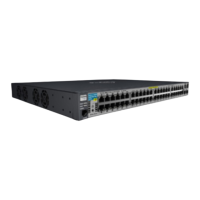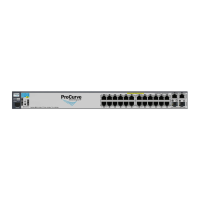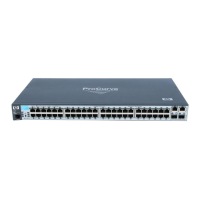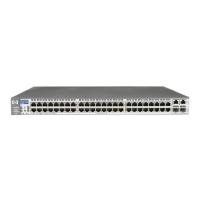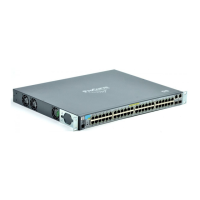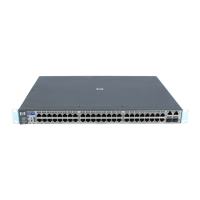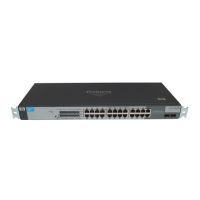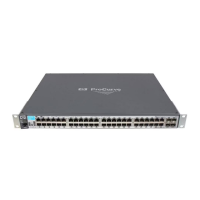Spanning-Tree Operation
802.1s Multiple Spanning Tree Protocol (MSTP)
[ path-cost < auto | 1..200000000 > ]
Assigns an individual port cost that the switch uses to
determine which ports are forwarding ports in a given
spanning tree. In the default configuration ( auto ) the
switch determines a port’s path cost by the port’s type:
– 10 Mbps: 2000000
– 100 Mbps: 200000
– 1 Gbps: 20000
Refer to “Note on Path Cost” on page 5-19 for information
on compatibility with devices running 802.1D STP for the
path cost values (Default: Auto.).
point-to-point-mac < force-true | force-false | auto >
This parameter informs the switch of the type of device to
which a specific port connects.
Force-True (default): Indicates a point-to-point link to a
device such as a switch, bridge, or end-node.
Force-False: Indicates a connection to a hub (which is a
shared LAN segment).
Auto: Causes the switch to set Force-False on the port if it
is not running at full duplex. (Connections to hubs are
half-duplex.)
priority < 0..15 >
MSTP uses this parameter to determine the port(s) to use
for forwarding. The port with the lowest priority number
has the highest priority. The range is 0 to 240, and is
configured by specifying a multiplier in the range of 0 -
15. For example, to enter a priority of 64 you would
configure Priority with a multiplier of 4; that is, (4 x 16
= 64). Thus, the displayed default setting of 128 is derived
from the default multiplier of 8. When you use the show
spanning-tree command options, the Priority appears as
the result of the multiplier x 16, and not the multiplier
itself. (Default: 128; configured multiplier = 8).
5-65
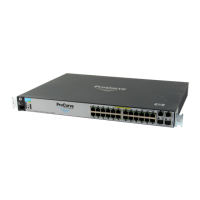
